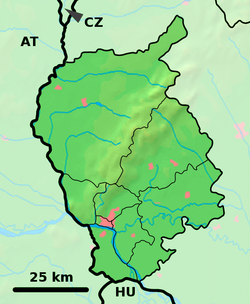Overview
The museum was reopened to the public on 18 November 2008 after two years of renovation. By using European Union funds and funds from the founder, the Bratislava self-governing region, the museum’s building has undergone a complete reconstruction. [2] The institution is being shaped as a regional museum with a strong accent on viticulture, grape growing and notably wine from the Small Carpathian viticulture region.
The museum features a tour of the cellar exposition with the biggest collection of viticulture presses in Europe, temporary exhibitions on various topics, workshops for schools and Small Carpathian wine tasting in the unique premises of the museum. It is one of the organisers of the St. Urban event, the Richard Réti Memorial international chess tournament, the Ceramic market and it is one of the stops during the Open Cellar Day on the Small Carpathian Wine Road. Together with the civic association Museum Vinorum, it is an organiser of the Pezinok Wine Cellars. The museum also organises temporary exhibitions abroad (e.g., the Vinohrady, wine and people exhibition presented in September 2005 in the European Parliament in Strasbourg and later in Vienna and Milotice, Czech Republic).
The institution has its own sommelier along with professional employees and technical staff.
This page is based on this
Wikipedia article Text is available under the
CC BY-SA 4.0 license; additional terms may apply.
Images, videos and audio are available under their respective licenses.


